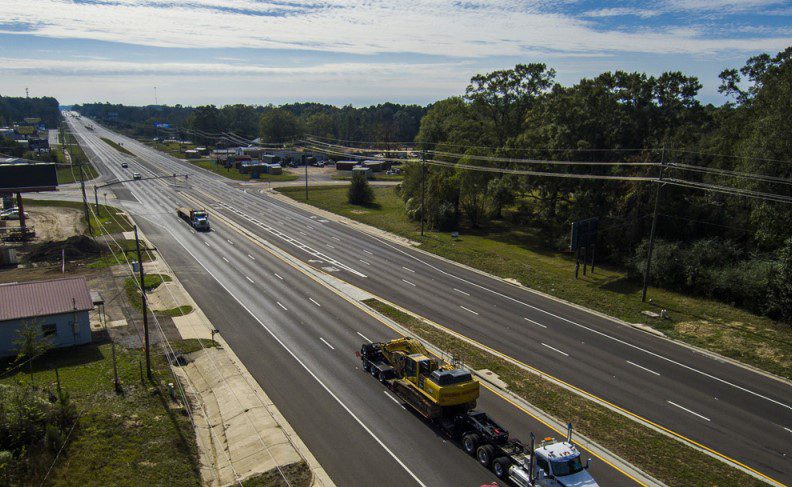
Several streets in the Ford subdivision are filled with waters from the neighboring Yazoo River in Vicksburg, Miss., Wednesday, Jan. 13, 2016. The river is a tributary to the Mississippi River and when that river backs up and floods, so does the Yazoo River. (AP Photo/Rogelio V. Solis)
Public comment is being accepted through August 7th. A draft of the Environmental Impact Statement is expected by December.
The U.S. Army Corps of Engineers is accepting public comments through August 7th on its notice of intent to prepare a draft environmental impact statement (EIS) for the Yazoo Backwater Area water management project encompassing Sharkey, Yazoo, Washington, and Issaquena, and Humphrey Counties.
The notice of intent was published Thursday in the Federal Register, and discusses the “Preferred Alternative” plan unveiled in May.
The notice states:
The U.S. Army Corps of Engineers (USACE), Vicksburg District, is announcing its intent to prepare an Environmental Impact Statement (EIS) for the authorized Yazoo Basin, Yazoo Backwater, Mississippi, Project (Project). The EIS will analyze a new water management solution for the Project. The EIS will also examine measures to avoid, minimize, and mitigate environmental impacts associated with the Proposed Action which is the USACE Preferred Alternative. The EIS process does not foreclose the authorities of other State and Federal agencies to assist those Yazoo Backwater Area communities in risk management, emergency response, and community resilience. State and Federal agencies, with applicable authorities, would be continually engaged as necessary throughout the process.
The EIS will examine measures to avoid, minimize, and mitigate environmental impacts associated with the unfinished flood control project, which was authorized by Congress in 1941.
As outlined in the Army Corps notice, the recurring backwater flooding has demonstrated the need to complete the remaining flood damage reduction feature of the Yazoo Basin and Yazoo Backwater Project.
“In the twenty-first century alone, the Yazoo Backwater area has experienced some degree of backwater-induced flooding 19 out of the 23 years. The historic 2019 flood inundated over a half million acres of the Yazoo Backwater Area from February to August. Another backwater flood occurred in February of 2020 and devastated the already flood-ravaged area. The 2020 floodwaters peaked only 2 ft lower than in 2019 and flooded over 450,000 acres of land,” the notice states.
The Army Corps notes that more volume of water passed through the Mississippi River at Vicksburg during 2019 than ever before in our period of record (1927–2022).
“During 2020 the second-most volume of water passed through the Mississippi River at Vicksburg. The volume of water passing through in 2019 was more than twice the amount of volume that Lake Erie can hold,” the notice reads.
Public engagement sessions and roundtable workshops were here in February and May of this year. Those sessions involved various individuals, groups, and organizations, including a session for community leaders, local elected officials, agricultural interests, and environmental organizations.
Both Mississippi U.S. Senators Roger Wicker and Cindy Hyde-Smith were in attendance, as was Congressman Bennie Thompson.
Senator Hyde-Smith welcomed the Army Corps notice this week and encouraged the residents in the affected area to engage in the public comment opportunity.

“Moving toward an environmental impact statement represents an important stage in the renewed push to finish the pumps and bring flood protection to a broad swath of the Mississippi Delta,” said Senator Hyde-Smith in a statement. “I encourage people in the Delta and throughout the state to offer comments on the EIS over the next month. I continue to appreciate the commitments and work of the Corps, EPA, and Fish and Wildlife Service to protect the people, communities, and environment of the South Delta.”
The Army Corps expects to release the draft EIS in December 2023, evaluating compliance with the Clean Water Act and other applicable laws and regulations.
To read the notice and to offer comment, visit the Federal Register here.











